Artist Lisa Rickard uses the nude figure as the basis for a series of allegorical paintings. Learn more by visiting her website.
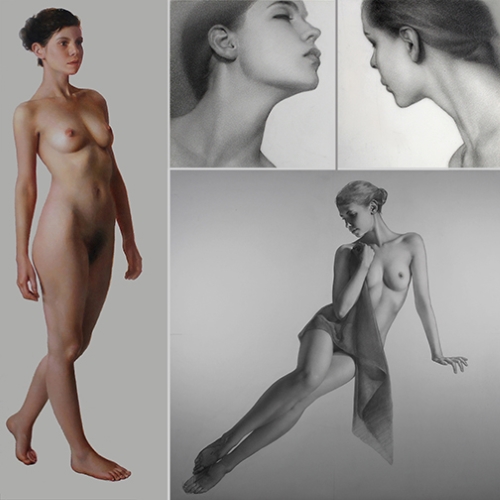
Composite of artwork by artist Lisa Rickard
I am a classically trained figure painter, currently painting figure allegories in my Florida studio. The nude as an art form has always resonated with me. As a teenager, my first life drawing of a dancer was purchased by an art collector. Subsequently, I attended Temple University’s Tyler School of Art and then the Milwaukee Institute of Art and Design. I graduated in 1998 with a Bachelor of Fine Arts Degree in Illustration.
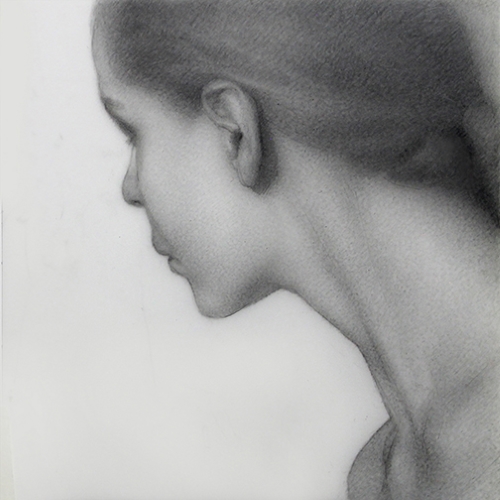
“Vega” graphite, 4″ x 4″
I could write about how I continued to draw the nude model regularly after graduation—how I developed my visual communication skills further by graphically designing and technically illustrating on a consecutive full-time basis for an advertising agency, design firm and a corporate marketing department in a global organization.
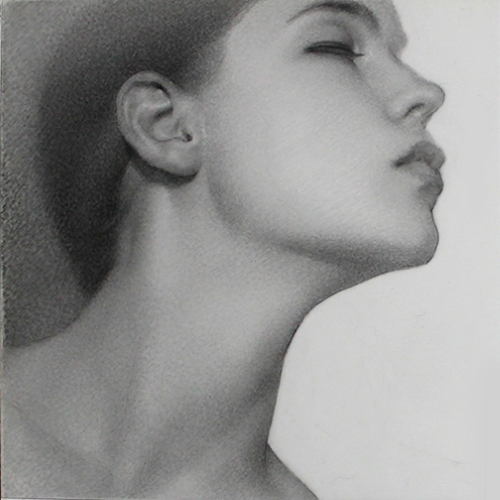
“Lyra” graphite, 4″ x 4″
I could describe how as a ZUMBA® dance fitness leader, I created custom choreography. It served to enrich my artistic anatomy knowledge and expressive design of human form.
I could share that in 2019, Capella, the first figure painting in my series honoring all nude art models was short listed by the 5th NTD International Figure Painting jurors. It was juried into two gallery exhibits in the United States. And it was a finalist published in the 14th International Art Renewal Center Salon, and published again in the Dec/Jan2020 issue of International Artist Magazine.
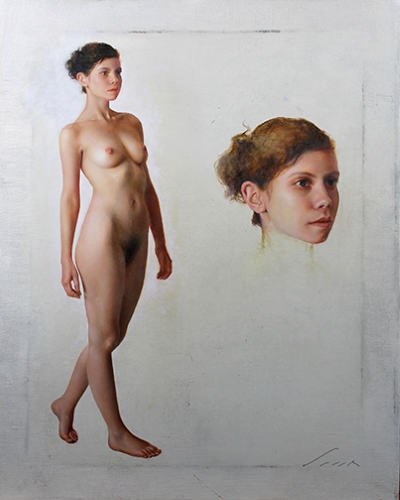
“Capella” oil, 16″ x 20″
But I’d rather talk about how I began the series of three allegorical figure paintings in 2018 in honor of all nude art models. They play an instrumental role in my creative process as an allegorical figure painter. Presently, this series is evolving into a larger body of work. It includes studies for the final paintings and a triptych that will continue the theme of highlighting the hidden meanings inherent in the universal experience of being human.
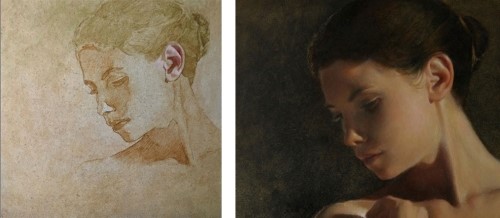
Head study in progress for Callisto, oil
The first three paintings in this series, Capella, Callisto, and Canopus are each named after a heavenly body in our universe. They are technically constructed using dots, lines and shapes of gradated color to describe the dancing light that I see flowing over human form.
Capella, the first painting in this series, is named after one of the biggest, brightest stars in our night sky. She allegorically represents the innocent child.
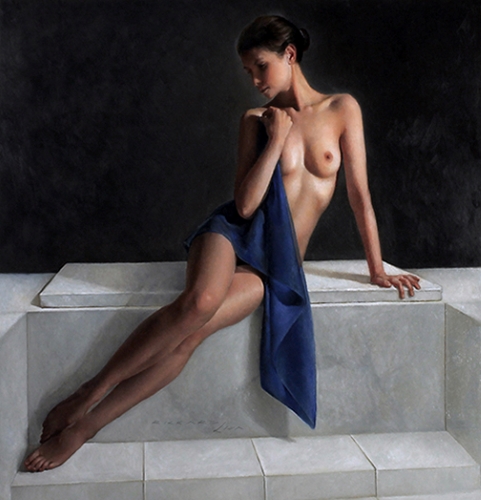
“Callisto” oil, 14″ x 14″
Callisto, the second painting, is named after one of Jupiter’s largest moons that scientists believe may have an underground ocean. She allegorically represents the adventurous adolescent.
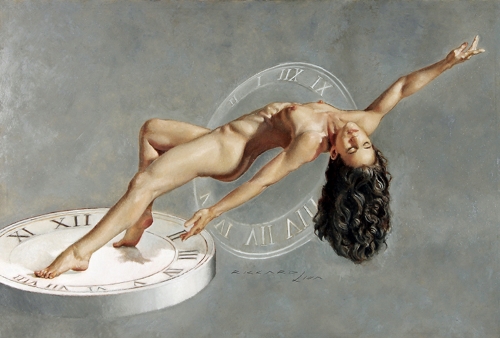
oil study for Canopus, oil, 12″ x 8″
Canopus, the third painting, is named after one of the brightest stars that can be seen in the southern hemisphere. She allegorically represents the awakening adult when childhood memories flicker like lightning in a night sky. Her gesture is similar to the projecting piece, the gnomon, on a sundial, that tells time by casting a shadow as the Earth rotates while orbiting the sun. This, for me, conceptually represents that matter, energy, space and time exists as long as there is movement in our universe.
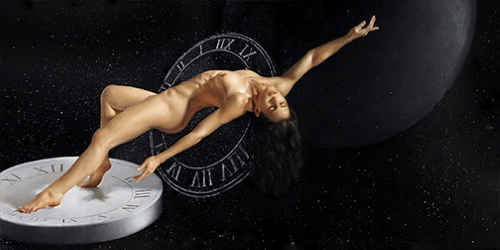
“Canopus” oil, 36″ x 18″
Ultimately, I continue to strive to evoke the dignity yet vulnerability of our shared human condition, which keeps me at the easel.
Artist Lisa Rickard invites you to follow her on Facebook, Instagram and LinkedIn.


Speak Your Mind